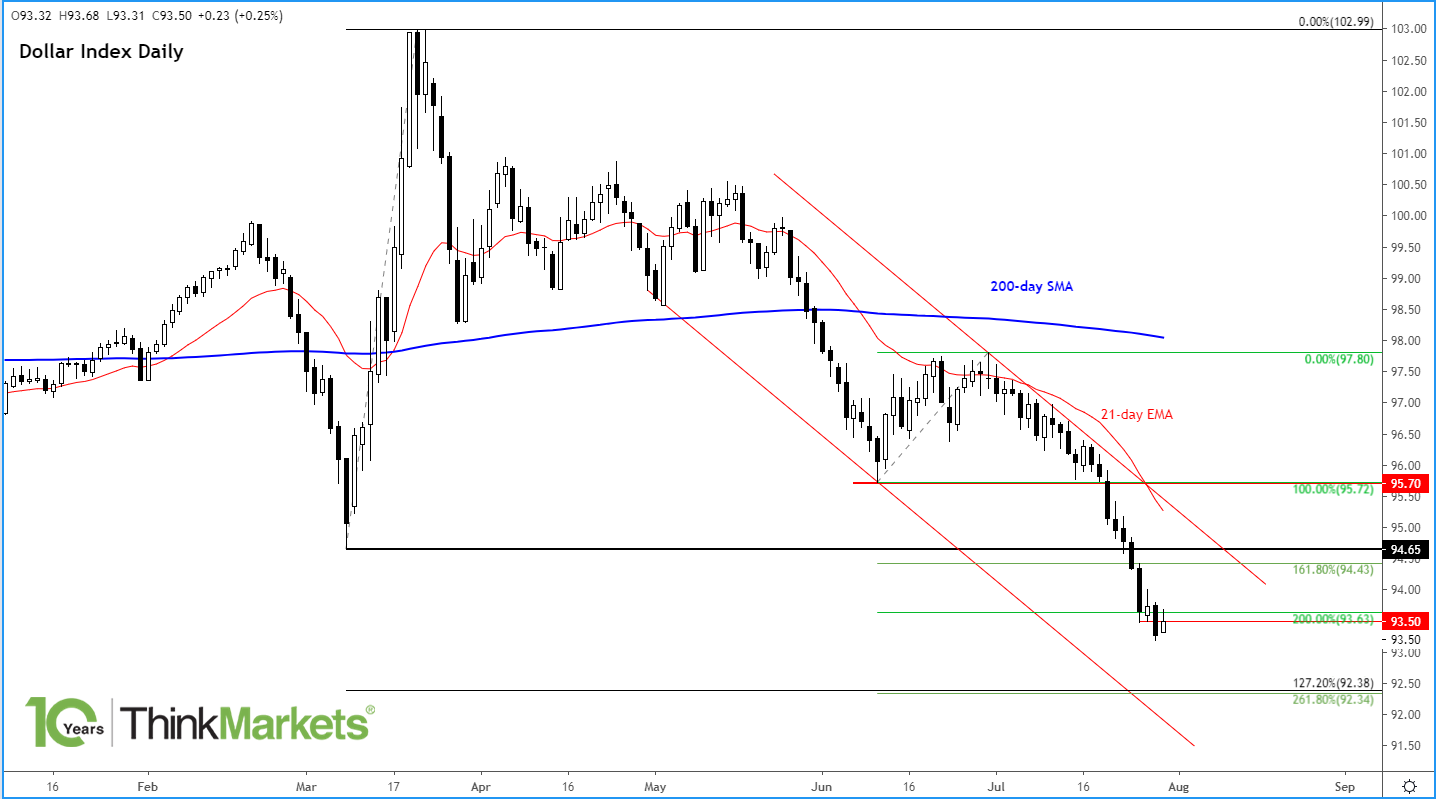…but that was priced in and people are more worried about the outlook for the third and subsequent quarters.
The US economy, the world’s largest, suffered its sharpest contraction in the second quarter since at least the 1940s, due obviously and entirely to the impact of coronavirus. However, the contraction was not as big as economists had predicted and the dollar hardly reacted to the news anyway. GDP dropped by an annualized rate of -32.9% in the second quarter compared with a 34.5% contraction expected. With the economy already contracting 5.0% in Q1, the US has officially entered a recession – not that this was any surprise. However, the most important thing now is not what happened in Q2, but what will happen in Q3 and subsequent quarters. A lot will depend on confidence of course, but with coronavirus halting the re-opining plans for some large US states in July, the third quarter GDP is unlikely to show a significant rebound either as we will surely find out in a couple of months’ time. The best thing that could happen is if a vaccine becomes available soon, but experts suggest this could be several months away still. That’s why Jay Powell yesterday promised that the Fed will do everything it can do to boost the recovery, meaning that US monetary policy will remain extremely loose for a long time. Against this backdrop, bond yields may well remain depressed for a while yet, which should be good news for gold and silver and bad for the US dollar.

Source: TradingView.com and ThinkMarkets
The dollar, which was already higher before the data was released, hardly reacted. But as the chart of the Dollar Index shows, above, the greenback remains in a strong bearish trend. This means that the path of least resistance is to the downside for the buck and that short-term rallies will more likely than not get faded.